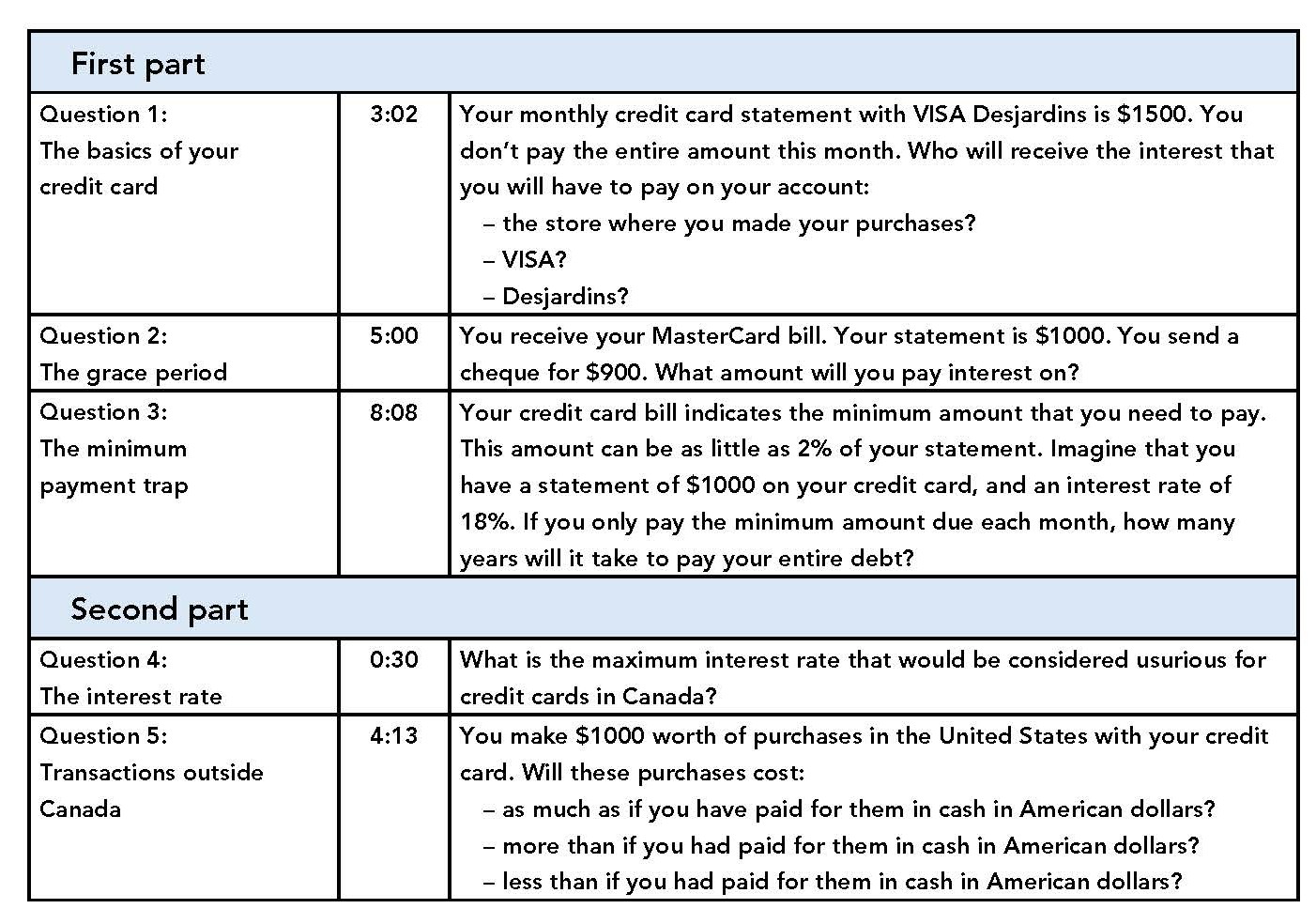Brief overview
This situation involves demystifying the use and operations of credit cards with students.
Learning area(s)
- Ethics and religious culture
Competence 1: reflecting on ethical questions
Describe the situation and place it in context, compare viewpoints, compare the situation to other similar situations, compare your analysis of the situation with other students’ analysis, suggest possible options or actions, examine the effects of these options on yourself or on the situation.
- Mathematics
Competence 3: communicate using mathematical language
Adopt a mathematical vocabulary, interpret or produce a mathematical message.
Explanation of the teaching goal
The usefulness and the risks of using credit cards.
Expected results
Make the students aware of the advantages of using credit cards, but also of the dangerous elements. In the end, the students will understand the importance of their reputation as a credit card holder.
Real-life situation
The teacher asks the students various questions to see how much they know about credit cards.
– What is a credit card?
– Why do we use a credit card?
– What are the benefits of using a credit card?
– Are there risks associated with using a credit card?
The teacher should make sure that the students have a good understanding of the idea of credit cards; i.e., they are a loan to pay for immediate purchases (stress the idea that they are a loan).
Realization
The teacher brings up the site http://ici.radio-canada.ca/emissions/la_facture/2008-2009/Reportage.asp?idDoc=72491 (French only) to view both parts of the report by La Facture, broadcast by CBC Radio. While watching the report, the teacher may stop the video so that the students can participate in a quiz to test their knowledge. A viewing plan is available in the Appendix.
Reinvestment
After watching the report, the teacher discusses with the students the proper behaviour to adopt when using a credit card. Desjardins suggests “5 tips on how to put your credit card to better use,” are available on their website: http://www.desjardins.com/ca/co-opme/action-plans-tips/credit-debt/tips-how-put-credit-card-better-use/index.jsp
The teacher explains to the students that bad credit card habits have monetary implications as well as consequences on your reputation in the eyes of financial institutions. A bad credit rating can be damaging for a long time. For example, a financial institution may refuse a car loan.
Going further …
The teacher may suggest the activity “Needs and Wants,” written by the Bank of Montreal and available on its website http://www.bmo.com/formulefuteepourparents/lazone/13-15ans/ under the heading “Activities and Tools”. Or, the teacher can also lead a discussion using an ethical question such as: What importance should be given to our wants over our needs?
Provisions
This situation requires Internet access and a projector (or smart board) to watch the video.
Material required
– Computer with Internet access
– Projector (or smart board)
– Appendix: Viewing plan
Assessment track
Ethics: Detailed analysis of a situation from an ethical viewpoint, assessment of possible options or actions to recognize which ones promote togetherness, find and compare different points of view related to a situation (C.1)
★ The teacher is free to adapt each section according to the needs of his/her group and the progress of the situation.
Appendix: Viewing plan
The CBC Radio program La Facture has a quiz dealing with the costs and operations associated with credit card use. The video is divided into two parts: part 1 lasts 12 minutes and part 2 lasts 8 minutes. The quiz format has questions about awareness, followed by a simple and easy-to-understand information capsule.
In class, we suggest stopping the video after each question to allow the students to respond before seeing participant responses, and to see how much they know. While watching, students are encouraged to discuss the different subjects to enhance this activity with conversation.





